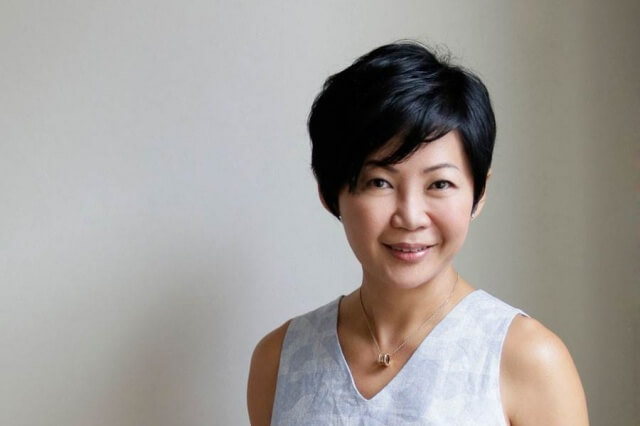
At a time where global brands such as HP and General Mills are forcefully asking agencies to add more gender diversity in their workplace, it is safe to say that the gender debate is something which is far from over. According to a recent whitepaper from Robert Walters, 75% of women surveyed in Singapore feel that they are inadequately represented in leadership positions.
Additionally, 37% of females in Singapore think their current employer has clear and enforced policies on gender diversity, equality and inclusion. However, 49% of women surveyed feel that their organisation is lacking in fair and equal representation of female business leaders.
The study also said that nearly 32% of women believed this is due to a preference by management to promote men over women, and 30% attributed it to a workplace culture that does not actively foster diversity, inclusion and equality. On the other hand, 56% of male respondents in Singapore think that women have sufficient standing in business leading roles.
“56% of male respondents in Singapore think that women have sufficient standing in business leading roles.”
While this study cuts across various industries, a probe by Marketing found that out of all those who were surveyed, 6% were advertising, PR and marketing professionals. We asked several ad industry women if the same was true in the case of female leadership in the marketing world?
Linda Locke, creative director and CEO of Godmother and an industry veteran in the marketing world said male management needs to realise how much value women bring to the business. Locke previously held CEO and ECD roles at Saatchi & Saatchi Singapore and was also regional CD at Leo Burnett Arc Worldwide. She was also previously marketing consultant at Club21.
Locke said the topic on female representation is not a new one. While progress has been made, much can still be done at a senior and board room level.
“Remember that across a wide spectrum of products and services in most parts of the world, women are the decision makers and the influencers, so who better to understand how to market to them?”
“It is a lot better than in the 80’s, 90’s and early 20’s. However, there is still plenty of room for improvement but women have to want to rise higher and be willing to fight recognition,” she added.

Agreeing with her is Goh Shu Fen, co-founder and principal of R3, who thinks drastic measures are needed to tip the unequal balance. She added that there are currently only 10.2% female representation on SGX listed companies.
“This is abysmal for a progressive, meritocratic business environment we’re promoting. The number is inching at snail pace, for a country with big ambition,” Goh said.
Are family pressures and commitments an issue?
When asked to name the top reason why women are under-represented in the workforce, 37% of all respondents in Singapore cited family pressures or commitments outside of work as a reason.
Speaking about the marketing field, Katharina Pohl, head of marketing at Cotton On Asia said:
The societal pressure and expectations from families is definitely more visible in Singapore than in most countries in Europe which makes it more challenging for locals to go for both, career and family.
“Careers are not unidirectional and there have always been and will always be challenges and opportunities along the way. Progressing in your career continuously requires hard work and commitment from both genders,” Pohl added.
Pohl added that both genders face their own challenges in climbing up the corporate ladder with societal pressures being relevant to both.
Agreeing with Pohl is R3’s Goh, who added that advertising as an industry is one which is far from family friendly for both genders. Hence, it is no surprise that a lot of capable, driven females feel they have to settle when they reach child bearing age.
“I was blessed to have it all, with the support of my family and my decision to strike out on my own after the birth of my second child. As much as I was enjoying the work, I did not want to review creatives at 7:30pm and miss out putting my kids to bed,” Goh added.
Need for strong female leaders
The survey also found that 21% of the respondents in Singapore agreed that women made up more than 20% of leadership positions in their organisations. The downside however, is that only 45% believed that there are strong female leaders within their organisations that they can look up to as role models.
Further advocating the need for gender diversity in the workplace, a majority (79%) of women in Singapore cited the presence of a mentor or sponsor at the senior management level as the most helpful driver in empowering them to develop their careers.
When asked by Marketing if there were any prominent female leaders or role models to look up to, Locke said:
“In the 1980s to 1990s there were none in Singapore. I respected the head of strategic planning at Saatchi & Saatchi London and she went on to be managing director of Interbrand. I just focussed on doing the best job I could and was helped by a number of smart men,” she said.
The case however was not the same for R3’s Goh, who added:
“During my time at Ogilvy in the 90s, there weren’t any female managing directors.”
“Sure there was the legendary Shelly Lazarus who was the global CEO. But her being a role model was as good as Hillary being role model for a young account executive,” explained Goh. The relationship was too far off to be called that of a mentor ship. She added:
“Leaders in Singapore need to stop thinking whatever is being done to rebalance gender inequality is enough. Drastic measures are required.”
“If half of the women population feel that equal leadership is lacking – this means that half your female workforce feels that the odds are against them in making progress in their career. Hence they are more unlikely to realise their full potential. Tragic,” Goh added.
According to Pohl, unless there is an actual equal representation of men and women in senior leadership positions in the marketing world, there will still be a need to create programs and initiatives to support gender equality.
Pohl said she has been fortunate to be surrounded by senior leaders, male and female, from different industries and backgrounds.
“Within Asia and Singapore in particular there are a number of senior female leaders within marketing or communication that I respect for their achievements and still learn from,” Pohl said.
Source: Marketing Interactive





